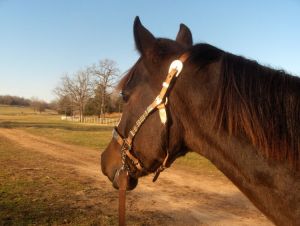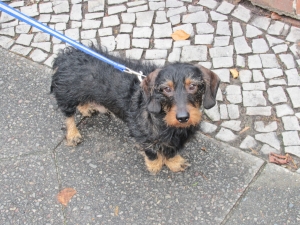 Superman’s (Christopher Reeve) fall from grace – and a horse – helped bring to light the dangers of horseback riding, even for an experienced rider like Reeve. As majestic and peaceful as horseback riding is, there are also dangers involved when you’re that high off the ground, at the will of another living beast. In order to make your horseback riding experience as safe and fun as possible, follow these helpful tips.
Superman’s (Christopher Reeve) fall from grace – and a horse – helped bring to light the dangers of horseback riding, even for an experienced rider like Reeve. As majestic and peaceful as horseback riding is, there are also dangers involved when you’re that high off the ground, at the will of another living beast. In order to make your horseback riding experience as safe and fun as possible, follow these helpful tips.
1. Get off the horse if your instinct tells you to. Sometimes when we get bucked from a horse, there are no warning signs (often times it’s because the horse trips or takes off quicker than you expect). But many times there are plenty of warning flags to let you know it might be time to get off the horse before something goes horribly wrong. Often times the horse starts fidgeting, or making noises, or moving in a way that’s unfamiliar to you. These are all signs that something’s amiss. Trust your instinct and take a breather to regroup both you and the horse.
2. Get back on that horse … is wrong. The person who came up with the saying that you should get back on that horse is dead wrong. Just because you fall off your horse (or willingly get off of it because you listened to tip #1), doesn’t mean you should immediately get back on. Your horse and you share a special bond, and if you get back on that saddle while still a little shaken up, scared, or timid, your horse will feel that, and echo those emotions. In order to maintain your confidence, and the bond between you and your horse, get back on when you’re good and ready. Not a minute sooner.
3. Heels aren’t all that. There’s a belief that deep heels down makes for good riding posture, and is the way to stay safe in your saddle. Young riders are taught this so prevent their foot from sliding through and getting caught in the stirrup. It’s also taught because it’s believed that having your heels way down provides a strong foundation. But your foundation should come from your rear end, and how it sits in your saddle. Instead of worrying about having your heels deep down, keep them slightly lowered. This positioning will also help you avoid pain and stiffness after your ride.
4. You’re not a drill sergeant. There is a difference between being a leader and a dictator. As the rider, you need to be emphatic of your horse’s state. Consider his emotions: it’s hot outside, he’s got on you on his back, digging into his sides, making him move around in circles. Doesn’t sound like fun. Rather than be a drill sergeant, be a leader who knows how to control his animal, while also showing that he can relate to the animal’s emotions and physical limitations.
5. Keep your head up. This may sound like a piece of spiritual advice, but we literally mean keep your head up. Your head is a heavy piece of real estate at the end of your body. If you’re not looking up, and focused on what’s ahead, you’ll easily throw off your balance. Think of your eyes as the horse’s steering wheel. You should always look first at where you want to go, before you steer your horse in that direction.
Springtime and early summer are marvelous times to enjoy a leisurely and safe horseback ride. Horses generally love the attention and exercise that accompany a ride, so long as their riders know what they’re doing. Follow these tips to stay safe, and to keep your horse happy.





